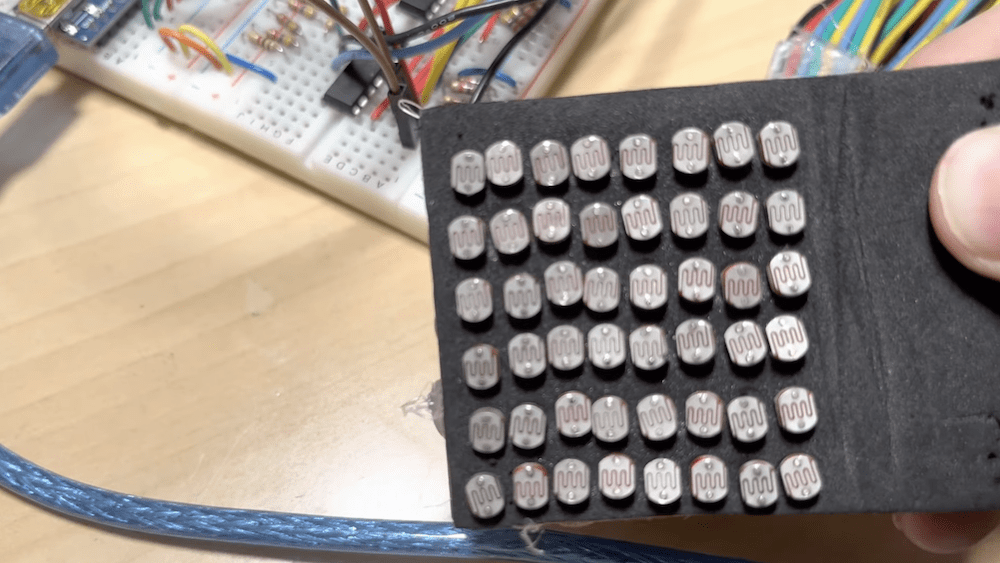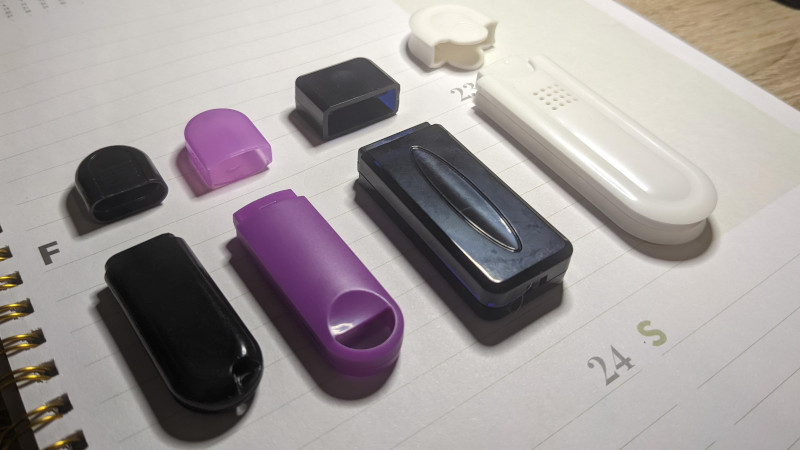Building the Worst Digital Camera Ever

Digital cameras work by letting light pass through a lens onto a sensor made up of photosites, each with a photodiode that emits a signal relating to the brightness of the light. Modern digital camera sensors have millions of photosites, each of which contains a microscopic photodiode. The number of pixels in the captured image is equal to the number of photodiodes. To demonstrate this concept, Electromechanical Productions used an Arduino to build "the worst digital camera ever".
Photodiodes alone cannot detect color, only brightness. Professional and consumer digital cameras incorporate color filters and algorithms to interpolate colors. But in this case, the image is black and white. This "camera" does not use color filters and does not even have a lens. It also only has a resolution of 8 x 6 - 48 pixels in total. Each of these photosites is a simple photoresistor, which is a component with a variable resistance proportional to the intensity of light striking it.

Electromechanical Productions used an Arduino Nano board to measure the brightness detected by each of these photoresistors. The Nano doesn't have enough analog input pins to handle 48 photoresistors, so a series of multiplexer chips allows consecutive measurements. The measurement process is fast enough that it doesn't have a negative effect here, because the image quality is so poor anyway. After collecting the array of brightness values, the Arduino sends the data to a computer which runs a Python script to draw a grid of rectangles representing each pixel.
The resulting image is so poor that it's hard to make out even the simplest shapes, but it's still an interesting educational project that helps explain how digital cameras work. It would be possible to increase the resolution by adding more photoresistors, but there is not much you can do with components of this size.


Digital cameras work by letting light pass through a lens onto a sensor made up of photosites, each with a photodiode that emits a signal relating to the brightness of the light. Modern digital camera sensors have millions of photosites, each of which contains a microscopic photodiode. The number of pixels in the captured image is equal to the number of photodiodes. To demonstrate this concept, Electromechanical Productions used an Arduino to build "the worst digital camera ever".
Photodiodes alone cannot detect color, only brightness. Professional and consumer digital cameras incorporate color filters and algorithms to interpolate colors. But in this case, the image is black and white. This "camera" does not use color filters and does not even have a lens. It also only has a resolution of 8 x 6 - 48 pixels in total. Each of these photosites is a simple photoresistor, which is a component with a variable resistance proportional to the intensity of light striking it.

Electromechanical Productions used an Arduino Nano board to measure the brightness detected by each of these photoresistors. The Nano doesn't have enough analog input pins to handle 48 photoresistors, so a series of multiplexer chips allows consecutive measurements. The measurement process is fast enough that it doesn't have a negative effect here, because the image quality is so poor anyway. After collecting the array of brightness values, the Arduino sends the data to a computer which runs a Python script to draw a grid of rectangles representing each pixel.
The resulting image is so poor that it's hard to make out even the simplest shapes, but it's still an interesting educational project that helps explain how digital cameras work. It would be possible to increase the resolution by adding more photoresistors, but there is not much you can do with components of this size.
What's Your Reaction?






















